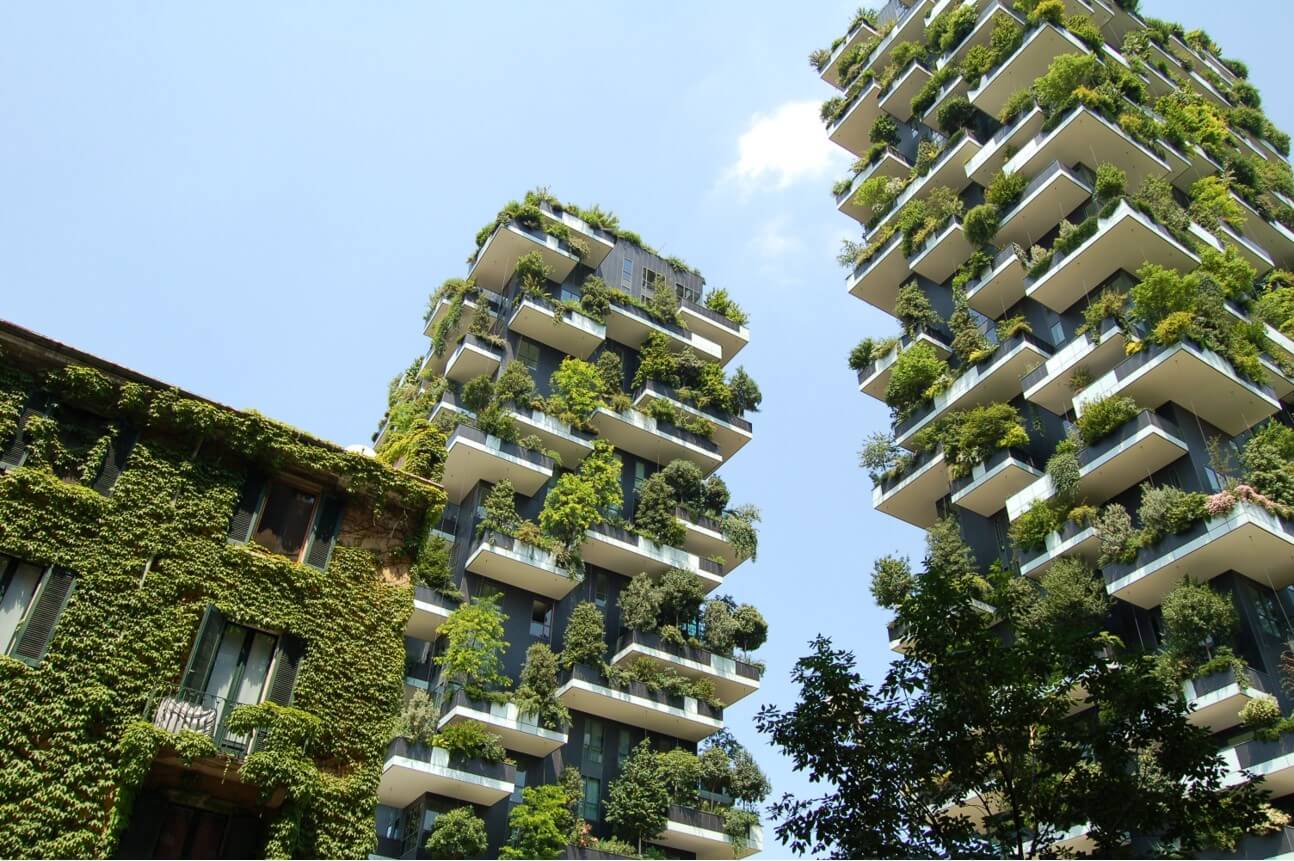You’ve always loved the hint of greenery beside your computer; and the vase with flowers on your dining table; and also the note of nature that comes from your open window—- it’s either a view of a summer lawn or a smell of spring blossoms. You may not notice it, but these little pieces of greenery or floral scent that remind you of nature, are a part of a beautiful design concept, it’s called Biophilic Design.
What is Biophilic Design?
Biophilic design comes from the word “biophilia”, which means the innate love of nature, refers to a design concept that combines nature or natural elements with the design processes to create a space that is beneficial to human health both psychologically and physiologically.
The definition of Biophilic design didn’t sound fascinating at all, did it? It feels like something we already knew forever. But when you look around your living and working space, and think again —- nature is something that’s missing in our daily lives for a long time. When was the last time you looked at the sky from your bed? Or sniffing floral scent when drinking tea? Or reading a newspaper beside a tree? That’s right, you can’t remember. Nature has been away from our urban lives for a while.
Why do you need nature in your daily life, you are asking?
I’m glad that you brought that up. Here is why: a number of studies have shown positive impacts that nature brought to human beings in terms of cognitive functionality, psychological, and physiological health and well-being (W. Browning, 2014).
Cognitive functionality: Workplace-like offices are usually involved with all types of directed attention activities, like routine paperwork, continuous analysis, repetitive calculation, etc. Overtime the tasks consumes energy, people start to feel fatigued and lose attention. However, a connection with nature can give a fresh break to the concentrated mind, restore energy, and as a result, increase work performance.
Psychological health and well-being: Empirical studies indicated that natural environments help restore emotions, reduce pressure, tension, anxiety, anger, fatigue, confusion, and total mood disturbance. Compare to urban surroundings with limited access to nature, people who live in a nature-like environment tend to be calmer, happier, and mentally healthier (e.g., Alcock et al., 2013; Barton & Pretty, 2010; Hartig et al., 2003; Hartig et al., 1991).
Physiological health and well-being: According to the article “The Health Benefits of Biophilia”, direct interaction with nature can not only reduce inflammation of elderly patients but also reinforce immune systems to fight against viruses and bacteria. Other impacts of connecting with nature like relaxing muscles, lowering blood pressure, and stress hormones are also proved by scientists (e.g., Park et al., 2009).
So, nature is good for health, how can biophilic design incorporate nature with design? Terrapin Bright Green has published a paper called “14 Patterns of Biophilic Design” in 2014, which has identified the 14 ways that nature or natural elements can be adopted in a design project. This paper has also categorized these patterns into direct, indirect and beyond the connection with nature:
Category 1- Nature in the Space (Direct)
1. Visual Connection with Nature
2. Non-Visual Connection with Nature- Auditory, haptic, olfactory, or gustatory stimuli that refer to natural elements.
3. Non-Rhythmic Sensory Stimuli
4. Thermal & Airflow Variability
5. Presence of water
6. Dynamic & Diffuse Light
7. Connection with Natural Systems
Category 2- Natural Analogues (Indirect)
8. Biomorphic Forms & Patterns
9. Material Connection with Nature
10. Complexity & Order
Category 3- Nature of the Space (Beyond)
11. Prospect
12. Refuge
13. Mystery
14. Risk/Peril
Some patterns of biophilic design are easy to understand, like visual connection with nature is literally display of nature elements in a visual distance; presence of water is to bring water the main nature element into the space; material connection with nature is to use natural materials like wood, stone, etc. However, some patterns like Mystery or Risk/Peril could be confusing, make people wonder how that is going to be implemented as Biophilic?
Please refer to my next article for more information about “the 14 patterns of biophilic design” that will be illustrated with live examples that’s hot and interesting.
References:
“14 Patterns of Biophilic Design.” Terrapin Home – Terrapin Bright Green, 12 Sept. 2014, www.terrapinbrightgreen.com/reports/14-patterns/.
“Biophilic Design – Connecting with Nature to Improve Health & Well Being.” Oliver Heath, 25 June 2019, www.oliverheath.com/biophilic-design-connecting-nature-improve-health-well/.
Kellert, Stephen R. “What Is and Is Not Biophilic Design?” Metropolis, 24 Feb. 2017, www.metropolismag.com/architecture/what-is-and-is-not-biophilic-design/.
“The Health Benefits of Biophilia.” FX Medicine, www.fxmedicine.com.au/blog-post/health-benefits-biophilia.
to Glumac, Special thanks, and Support for the Biophilic Design Transition Lab was provided by the Robert Wood Johnson Foundation. The views expressed here do not necessarily reflect the views of the Foundation. “Biophilic Design Initiative.” International Living Future Institute, 14 Sept. 2020, living-future.org/biophilic-design/.
Image credit goes to:
https://medium.com/@seembu/3-simple-ways-to-design-a-biophilic-home-7e93fafdb0c2

